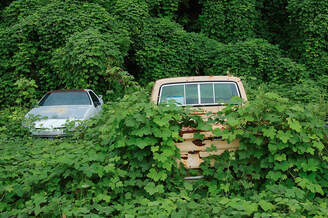 Kudzu growing over two vehicles. Kudzu growing over two vehicles. Over 20 years ago I happened upon a book called "Willow Basketry" that changed my life. Funny enough, it was almost 18 years later that I touched my first piece of willow, but that book in particular ignited a passion within me to explore the use of locally-available, sustainably harvested natural materials in basketry. When I looked around in my area of the world - the southeastern United States - all I had was... yes, you guessed it: kudzu. I had never seen kudzu used in basketry at that point in my life. I was just a college kid who loved the outdoors and making things with my hands. Little did I know that just like everything that comes in contact with kudzu, it would take over my life and turn me into a major kudzu advocate, or as some have said over the years, "the King of Kudzu". I have to admit, when I first started using kudzu, I had no clue on how to use it in weaving, much less prepare it in order to get the best results. All I knew was that there was plenty of it and it looked as if it might be weaveable. Thanks goodness my instinct was right, otherwise who knows what I'd be doing all these years later! 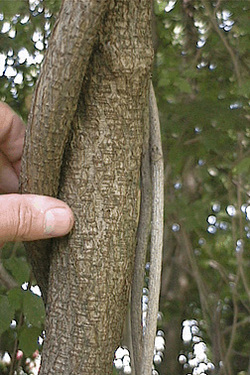 Large Climbing Kudzu Vines Large Climbing Kudzu Vines Kudzu is Kudzu, Right? When you look at a kudzu patch in the spring or summer, the first thing you probably see is the large green leaves. Those are not going to help you very much, unless of course you're using it to make paper like basketry artist Nancy Basket. For the most part, as a basket maker, you'll have to look a little deeper. Way deeper. Below all the leaves down to the vines. Now when it comes to the kudzu vine, I initially thought there was only one kind of vine. However, over the years I've learned that there are 2 very distinct types of vines. One I call the "climbers" and the other I call the "runners". At the end of the day, yes they are the same vine however depending on how and where they are growing the vines have very different properties. Let me explain. The climbers, as you might think, are the vines that make their way up and around the trees and all their branches, covering everything in sight. In the winter, when all the leaves fall, they look like huge ropes hanging from the trees. The bad part about this is that these vines essentially smother the tree and kill it over time. However, from a basketry perspective, they create a vine that has some very unique properties. Climbing kudzu vines are typically:
That being said, these climbing kudzu vines are great for some things in basketry but not so great for others. The secret, like most things, is knowing what you can do with it and what you can't so you don't have unrealistic expectations about the material and your final outcome. Climbing kudzu vines would be best suited for more 'rustic' work where you want to use chunky, funky material. It's great in large or small random weave applications either whole or split. You can also twine or plain weave with it as well. When you split larger climbing kudzu vines, you'll notice that it frays pretty bad, leaving a lot of extraneous fiber. Some people like it, some people don't. I tend to not, but that's just me. 95% of people that weave kudzu weave this type of material. It's traditionally harvested green and woven right away, giving you a real organic, freeform kind of look. Don't be surprised when you weave it this way because your basket will become what we call in the south, whopper jawed. For those of you not from the south, that means crooked or warped. Basically when you harvest and weave this green material it's going to shrink a lot and contort a little as it dries. It's not necessarily a bad thing, but again just expect it. 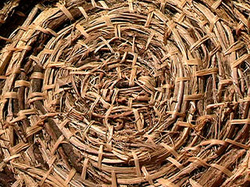 Coiled Kudzu by artist Nancy Basket Coiled Kudzu by artist Nancy Basket Deconstructing Climbing Kudzu The best way I like to use climbing kudzu is to deconstruct it in a couple of different ways. First, you can make a sisal-type material out of it by doing the following:
This method is great to use if you're a coiler or a twiner. You typically have very long lengths of material that's very flexible and perfect for coiling and twining. So if you're coiling, what do you stitch with in this type of basket? Some folks use waxed linen, and others I've seen use raffia. However, I would suggest using the kudzu bark that you set aside! Kudzu bark is one of my favorite materials to stitch with and to do fine twining with. Just use very sharp scissors, a knife or a Jerry's Stripper to cut the material to the size you want. It's super flexible and very, very strong. Just watch out for knots or holes in the bark that might weaken as you work. Regardless, it's a fabulous material. 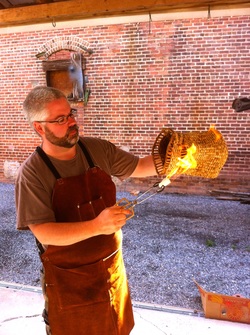 Finishing With Fire At the end of weaving a basket with climbing kudzu, no matter how you've prepared it, you may want to do what I call 'singeing" the basket. Basically, while it's still damp, I take a cotton ball, dip it in alcohol and while holding it with some metal tongs, light it with a lighter. You basically just made a big wick. Take this flaming wick and move it quickly around your basket and it will burn away all those extraneous fibers we talked about a few minutes ago. If you like those, then just leave it natural. Either way, I'd recommend spraying it with a satin finish polyurethane spray. It just seals it and brings out all the natural colors.
11 Comments
3/27/2014 11:42:23 pm
Hello Matt,
Reply
Susanne
4/22/2017 06:19:06 am
Hello. Is there really a Basket Weaving Club? I am a lone weaver living in north Asheville. I would love to connect with some fellow weavers who share my love.
Reply
Matt
4/22/2017 06:54:46 am
You can see all the NCBA basketry guilds here: http://www.ncbasketmakers.com/guilds.html
Pameal deal
1/2/2017 09:58:08 am
I enjoyed reading this blog. Thank you so very much for writing it. Would love to come to Asheville to take a class but I just don't know if I can pay that much. I understand it is a two day class and lunch is included. How long are the classes?
Reply
Matt
4/22/2017 06:55:42 am
Here's all the info on my classes - most are already filled except for Twining and Harvest/Weave in December
Reply
Louise
7/20/2017 05:25:44 pm
Thank you for the great article! I have one question. How long can you keep your kudzu, after you cut it, before it is too dry to weave with?
Reply
Don Gore
4/21/2018 10:55:03 am
I have to admit I hate the stuff, growing up helping with my dad's junkyard, we were forever fighting the stuff, it can destroy a car if it covers it over creating a bad environment for metal.
Reply
Daniel Flickinger
8/8/2018 08:43:04 am
I have two small properties in south western Pennsylvania I'd be willing to allow people to harvest the kudzu from. If anyone is interested, please contact me at [email protected]
Reply
Susan Dietz
9/2/2018 05:20:11 am
Do you have any books on weaving with kudzu? Or do you recommend any?
Reply
Donna
12/22/2019 04:59:27 am
I have all the kudzu you might need. If you need anymore.
Reply
Leave a Reply. |
AuthorMatt Tommey is a leader in the contemporary basketry movement and has been a maker for over 25 years. The focus of his work centers around the use of southern invasive plant species in basketry. He has served on the board of directors for the National Basketry Organization and taught at Arrowmont, the John C. Campbell Folk School and other locations both in the US and internationally. |
Mailing Address: PO Box 1382 Lindale, Texas 75771
Studio Address:Private By Appointment Only
(404) 538-5173.

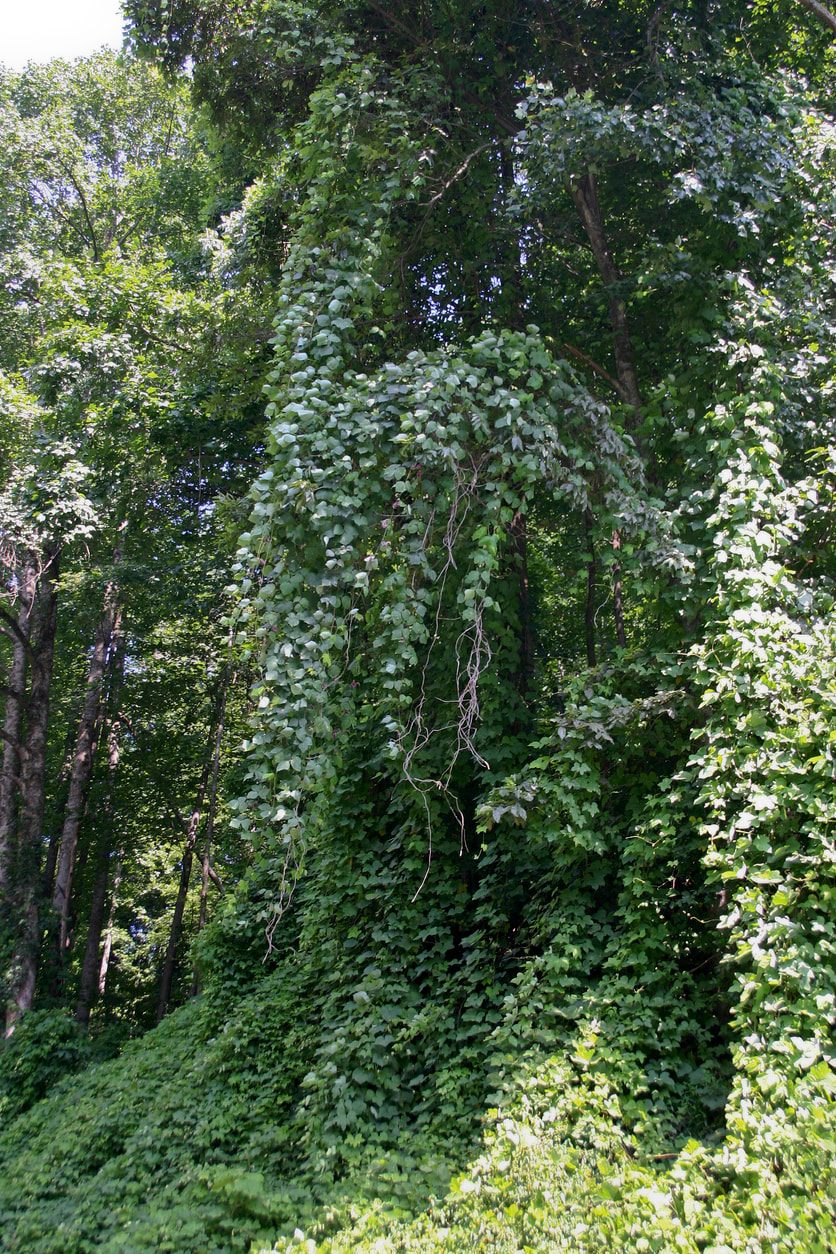
 RSS Feed
RSS Feed